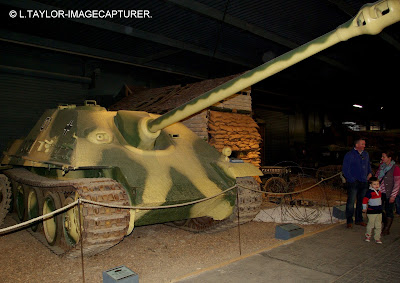SOPWITH PUP.
Single seat fighter. Pilots regarded the pup as the perfect flying machine. The Royal Navel Air Service and the Royal Flying Corps both used it extensively. Date - 1916 - 1918. Engine - 80hp Le Rhone 9c nine cylinder rotary engine. Top speed - 112mph at sea level. Service ceiling - 20,500 feet. Armament - one forward firing synchronised 7.7mm Vickers machine gun and up to four 25lb bombs on external racks. Where used - UK, Western front, Italy, Mediterranean.
~~~~<<<<>>>>~~~~
SOPWITH STRUTTER.
Two seat fighter and single seat bomber. The Strutter was designed as a high performance fighting aircraft. Both the Royal Flying Corps and the Royal Navel Air Service flew large numbers of them as did the French Aviation Militaire and Belgian and United States Air Services. It was named the strutter because of the unusual arrangement of the central mainplane bracing struts. Date - 1916 - 1918. Service ceiling - 13,000 feet. Engine - 130hp Clerget 9 B nine cylinder rotary engine. Top speed - 100mph. Armament - fixed forward firing 7.7mm Vickers machine gun, Lewis gun in rear cockpit, up to 224lbs of bombs. Where used - Western front, Russia, Macedonia, Mediterranean, UK Home Defence, Romania and Japan.
~~~~<<<<>>>>~~~~
BRISTOL M.1c.
This is a replica of the single seat fighter. Date - 1917 - 1918. Engine - 110hp Le Rhone nine cylinder rotary. Top speed - 130mph at sea level. Service ceiling - 20,000 feet. Armament - one fixed forward firing 7.7mm synchronised Vickers machine gun. Where used - UK ( training ), Macedonia, Palestine, Iraq and Chile ( export ).
~~~~<<<<>>>>~~~~
MITSUBISHI Ki - 46 III ( DINAH ).
Reconnaissance Photographic. One of the most elegant aircraft of world war two, the Dinah was so successful that Germany tried ( in vain ) to acquire manufacturing rights from Japan. Although fighter and ground attack versions were developed, it was in the high altitude photographic reconnaissance role that the Ki - 46 excelled. Given allied codename `Dinah` this aircraft combined high speed with long range and was able to cover the entire Pacific theatre of operations with little opposition.
~~~~<<<<>>>>~~~~
MODEL of a BOEING C17.
This is a manufacturers model of the Boeing C17. The first C17 for the RAF was delivered in May 2001 and is operated by 99 squadron. In all 99 squadron has eight C17 aircraft. In RAF service the aircraft is unofficially known as the Globemaster.
~~~~<<<<>>>>~~~~
GLOSTER METEOR T.7 VZ634.
Tandem two seat conversion trainer. Built and flew for the first time in 1949. Entered service with 247 squadron in 1949. Carried a crew of two. Max speed - 585mph. Range - 1,000 miles. Service ceiling - 40,000 feet. This aircraft is powered by two Rolls Royce Derwent 8 turbojets each rated at 3,600lbs static thrust. It did not carry any armament.
~~~~<<<<>>>>~~~~
CESSNA 310A G-APNJ.
Twin engine business and executive transport. Built by Cessna in the USA in 1956. Carried a crew of four or five. Max speed - 221mph. Range - 1,729 miles. Service ceiling - 19,500 feet. The aircraft is powered by two Continental O-470-M horizontally opposed piston engines each rated at 240hp.
~~~~<<<<>>>>~~~~
SOCATA MS. 880B RALLYE CLUB G-BFTZ.
Three to four seat light aircraft. Built in France in 1968 and registered F-BPAX. In June 1978 came to the UK and registered G-BFTZ. Carried a crew of one plus up to three passengers. Max speed - 121mph. Range - 530 miles. Service ceiling - 10,500 feet. The aircraft is powered by a Rolls Royce Continental O-200-A four cylinder horizontally apposed piston engine rated at 100hp. This example is the oldest of its type now in existence in the UK.
~~~~<<<<>>>>~~~~
DE HAVILLAND VENOM NF.3 WX905.
Two seat night fighter. Aircrew - two. Max speed - 630mph. Range - 1,000 miles. Service ceiling - 49,200 feet. Loaded weight - 15,800lbs. Span - 42 feet 11 inches. Length - 36 feet 7 inch. Height - 6 feet 6 inches. Armament - four 20mm Hispano cannon. Power plant - one De Havilland Ghost 104 engine rated at 4,950lbs static thrust.
~~~~<<<<>>>>~~~~
SUPERMARINE SWIFT FR.5 WK277.
Fighter/ reconnaissance aircraft. Aircrew - one. Max speed - 685mph. Range - 630 miles. Service ceiling - 50,000 feet. Loaded weight - 21,250lbs. Armament - two 30mm Aden cannons and provision for underwing stores. Span - 32 feet 4 inch. Length - 43 feet. Height - 13 feet 6 inches. Power plant - one Rolls Royce Avon 114 engine rated at 7,175lbs static thrust.
~~~~<<<<>>>>~~~~
AIRSPEED AMBASSADOR.
British piston engine passenger aircraft which flew on European routes in the 1950s. Engines - two 2,625hp Bristol Centaurus 661, 18 cylinder radials. Dimensions - wing span 115 feet, length 82 feet. Weight - 52,500lbs. Performance - max speed 312mph, cruising speed 260mph. Crew - three. Passengers - 47.
~~~~<<<<>>>>~~~~
AIRCO - DE HAVILLAND DH9.
Bomber. First world war British bomber designed for strategic attacks on German cities, railways and airfields. Not very successful because of its underpowered and unreliable engine. DH9s were some of the first aircraft stationed at Duxford.
~~~~<<<<>>>>~~~~





















































